Every dog owner must know how to teach a puppy NO, because this command is very useful:
- 👉It helps keep your puppy from doing dangerous things, like running into the road or trying to eat something nasty off the floor or from the potty.
- 👉You can use this command to keep your puppy from biting, chewing, jumping, and other unwanted behavior.
You will need lots of treats and plenty of time to train your dog. This is because each command needs to be repeated many times.
📌 Is your puppy hyperactive? Learn effective ways to calm your puppy down.
Contents
Step 1 – Teaching basic commands at home
Start training when your puppy is hungry. It won’t work if he’s full.
- Take the treat and show it to the dog. When he wants to grab the treat, clench it in your fist and say the command “No”.
- Move a short distance away from the pup and repeat the first step several times. Your goal is to have your dog leave your hand alone when you say “No” and not try to grab the treat, but wait for further commands.
- Teach your puppy that he can eat treats when you say “Okey.” When the puppy stops trying to reach for the treat he’s not allowed to take, praise him. Give the treat, but from the other hand, and say the command “okay.”
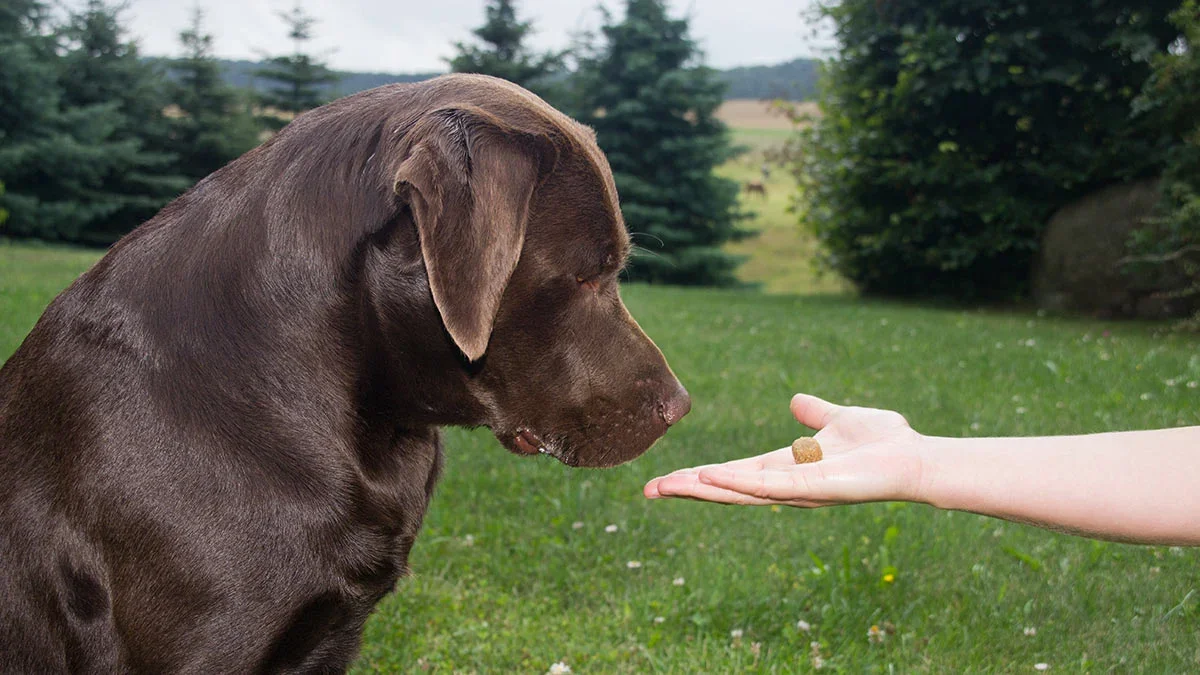
Repeat the exercise regularly and several times a day. Your pet needs to understand that he must stop when you say NO, and that he’s being praised for good behavior.
Dogs understand body language, so your facial expressions and posture are important when training. The intonation of your voice also matters. If you speak in your normal voice, the dog will not understand if it's being scolded or praised.
Step 2 – Teach your pup to focus on you
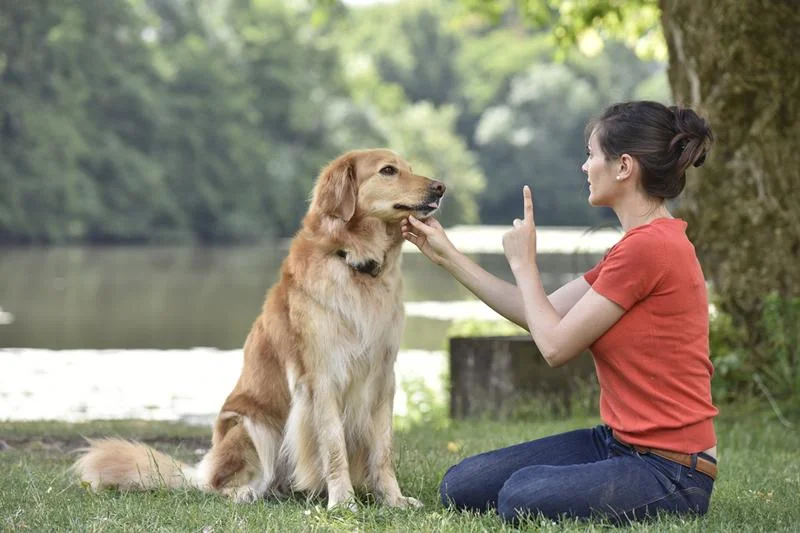
Over time, try to make the task more difficult. Don’t give the dog a treat immediately when he performs the required action. Be quiet for a while and watch the dog. When he starts to make eye contact with you as well, give him the treat.
This way, your puppy knows that when you give the command “No”, he not only has to stop doing something, but he also has to turn his attention to you. If you want your dog to show even more composure, teach him to wait longer for a treat.
Step 3 – Make the task more difficult
If the treat is clenched in your fist, it’s clear that the puppy cannot get it. But he must learn to obey when the treat is open on the floor. So repeat the same commands, but leave the treat free.
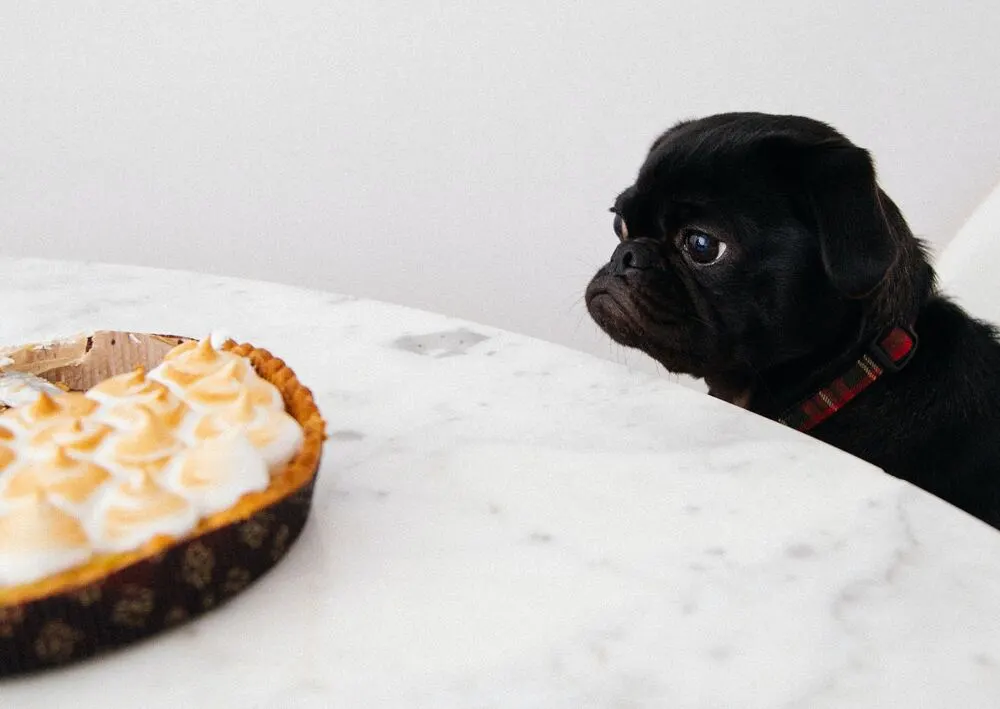
The treat you use to encourage your dog should be tastier than the one lying on the floor. You need to know well the preferences of your furry baby.
If you’re looking for good dog treats or food, I recommend you to take a look at Chippin food. It’s made from natural products and the recipes are developed under the guidance of veterinarians. Check out their menu.
Step 4 – Use the command outdoors
Try to repeat the same command when you go for a walk outside.
👉You can put treats on the road beforehand and then go out with the puppy.
👉When he smells the treat and wants to grab it, stop him and say no. Stay until the dog stops pulling on the leash or keeps going forward.
When the puppy listens to your command and looks at you, praise him and give him a treat from your pocket.
Step 5 – Reduce the number of treats
Gradually reduce the number of treats you give for performing the command. You won’t always be able to have treats with you, so your dog should be able to obey without them. At first, just give treats and praise your pup once in a while, that’s all. Then do it even less often.
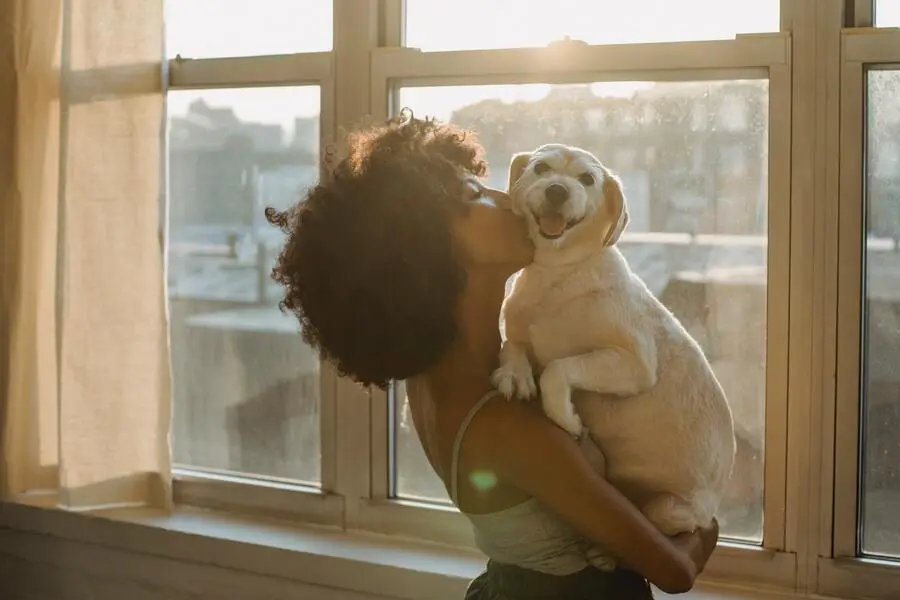
Another way to teach a puppy “no”
This method is almost the same as the previous one, except that here we use an additional negative reinforcement. One such reinforcement is a rattle that makes a loud and unpleasant sound. It can be made from a can filled with pebbles. Again, your puppy must be hungry enough.
Prepare a rattle and a lot of your dog’s favorite treats and get started:
- Put the treat in the center of the large room.
- When the puppy tries to reach and eat the treat, suddenly start rattling your rattle and say “No”
- Take the puppy away and repeat your steps again. The frightening noise of the rattle and your stern command tell him to stop.
When your puppy understands what you want him to do, you can try training him without the rattle, using only the command “No”.
Important things
To make it easier for your puppy to perform the “No” command, keep these three things in mind:
- Your puppy should have toys. If you keep telling him not to chew and giving him nothing in return, the results will be short-lived. Puppies need something to play with and chew on. You can switch your dog’s attention to his toys and when he tries to do something forbidden.
- You can also try not only to forbid the dog to do something, but to teach him what to do. For example, if you don’t want your dog to jump on you, teach him the command “sit”. And if you don’t want your dog to pull on your pants, for example, give him a toy instead.
- You need to get enough exercise and take your dog for a walk everyday. Your puppy needs a place where he can release his energy. Otherwise, he’ll be too active and not obedient at home.
- Put away all the things you don’t want your dog to touch. While your puppy is small, he needs to learn about the world and everything around him. So if there are many objects within reach, he’ll want to explore them. As long as he doesn’t know the command “No” yet, you shouldn’t provoke him too much.
I hope these tips will help you!
For comfortable and safe walks with your dog, you may need a stroller. Check out our chart with the best strollers for dogs.
If the training is unsuccessful
I know how difficult it can be to train a dog. If you’re having trouble teaching your puppy a new command, then you can use an assistive device. For example, OnGuard from GoodLife™.
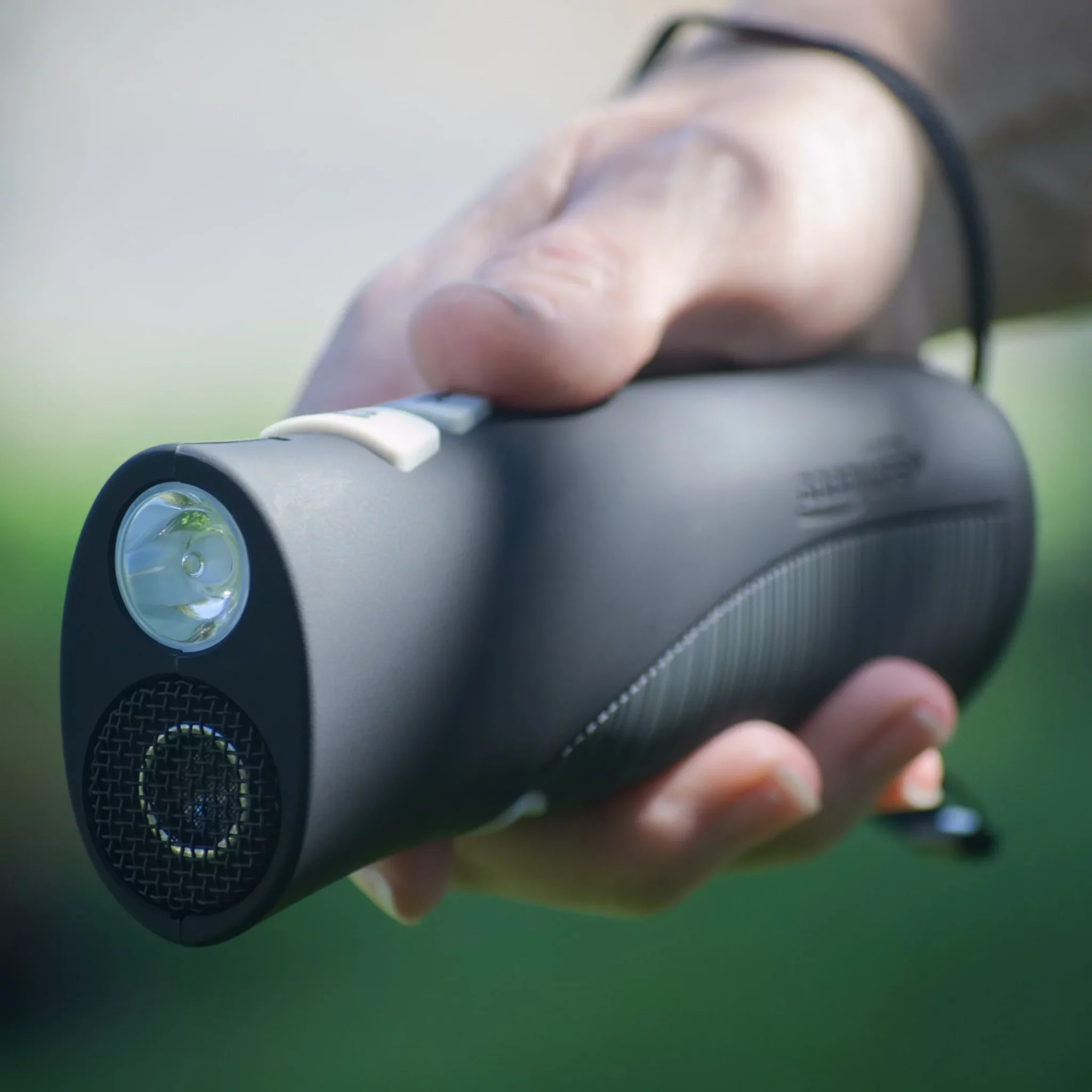
This device emits ultrasound to stop your dog from unwanted behavior. The sound is unpleasant to the dog, but inaudible to humans. Next time your dog does something bad, say “no” and use this device. Then your training success will be greater.
Note, however, that OnGuard is only suitable for dogs over 1 year old.
FAQ
How long does it take for a puppy to learn no?
Most dogs begin to understand the command after 5-10 lessons, but undoubtedly it will take more time to consolidate this command.
When can puppies understand “no”?
Training can start at the age of 8 weeks. Then puppies can already focus their attention on something.
Is it OK to tell a puppy no?
It’s a normal and even necessary command. It helps keep your pet out of all sorts of trouble.
Save this article on Pinterest so you don’t lose it!
This video can tell you more:
Important research topic: Should I spay my puppy? Pros and cons of spaying for dogs.
Sources:
https://www.purina.com.au/dogs/exercising/no#.YdchxWhBxPY
https://www.wikihow.com/Tell-Your-Dog-No
- How to make OUTDOOR DIY dog potty area - June 18, 2023
- BEST dog organization ideas to keep your home tidy - June 1, 2023
- 10 Best behaved dog breeds - May 29, 2023